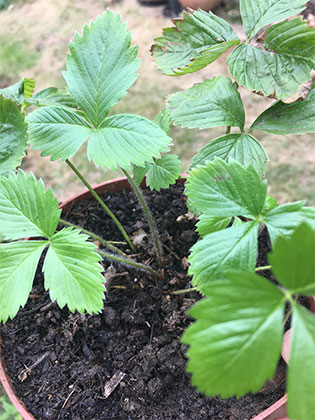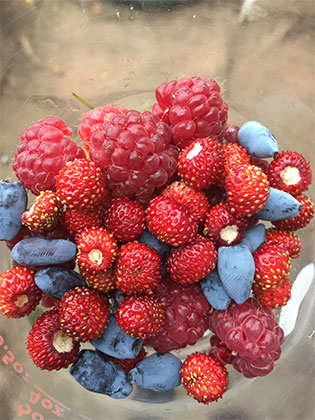
- Herb
- Berries
- Food forest
- Bees and butterflies
- Edimentals
- Medicinal
Wild Strawberry
Fragaria vesca
Ground creeping herb found wild in England that produces small edible fruits.
PLANT TYPE Herb
PLANT HABIT Perennial
USES Culinary, Medicinal, Pollinators, Ornamental
DESCRIPTION
Also commonly known as: European Strawberry, Alpine Strawberry, Wood or Woodland Strawberry. Shade tolerant ground creeping herb found wild in England. Produces flavoursome, abundant sweet tasting red berries in Spring and early Summer. Categorised as near threatened in England due to changes in countryside management that have led to the dramatic decline of wildflower meadows.
Produces long and spreading, above-ground runners. Has bright green trefoil leaves with toothed edges and hairy undersides. Its small flowers have five rounded white petals, followed by tasty fruits in Spring. Arguably growing wild strawberries is more rewarding than growing commercial strawberries in that they don’t get eaten by slugs, require no maintenance and because of their ground creeping habit help create a productive food garden understory you can add to your breakfast each morning.
According to the Kew Gardens website, in Cornwall, young girls used to rub wild strawberry leaves on their faces to improve their complexion. Has various medicinal uses.
Photos include some Summer berries picked from the garden for breakfast, including Honeyberries (blue ones), Raspberries and Wild Strawberries.
PRODUCT NOTES Plant in a pot.
RECOMMENDED LOCATION Forest garden, Wildlife garden, Ornamental garden
Aspect Full sun, Partial sun
Height to 20cm
Spread 20cm
Hardiness Hardy in UK WInter
Prefered soil pH Wide range of soils
Origin/history
Native to Europe, Russia and the Middle East. The name ‘strawberry’ is thought to have come from ‘streabariye’ - a word used by a Benedictine monk in AD 995 to describe how the plant spreads through runners.

